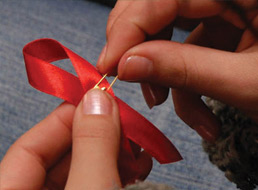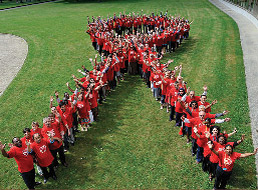Study Aims
The purpose of the Women’s Interagency HIV Study (WIHS) is to comprehensively investigate the impact of HIV infection in women. Primary research areas in the WIHS include:
- The spectrum and predictors of AIDS-defining and other HIV-related conditions
- Predictors of cervical neoplasia, HPV-mediated cervical disease, and genital infections
- Immunological and virologic markers, and clinical predictors of disease progression
- Trends in substance abuse, sexual behavior, health care utilization, and psychosocial outcomes
In addition, Specific Aims were developed for WIHS V (2013-2017) by each of the scientific working groups (WG). These are listed below by WG.
- Female Genital Tract and Pathogenesis
- Pharmacology
- Metabolic/Cardiovascular
- Neurocognition
- Human Papilloma Virus (HPV) and Cancer
- Liver/Hepatitis
- Epidemiology
- Social and Behavioral Science
- Pregnancy and Gynecology
- Genetics
Female Genital Tract and Pathogenesis:
- To further analyze soluble (pro and anti-inflammatory cytokine, chemokine, and growth and metabolic factors), cellular immunology (T cell maturation subsets, regulatory T cell populations, immune activation and apoptosis markers, and functional T cell subpopulation – TH1, TH2, TH17) and microbial translocation (sCD14, LBP, EndoCAb, and IFABP) biomarkers that represent key HIV disease phenotypes (“elite” controllers, long-term non-progressors (LTNP), untreated progressors, treated viral and immune responders and nonresponders, HIV-negative women) and determine which immunologic changes predict HIV and non-HIV related comorbidities independent of existing markers of HIV disease progression (CD4, HIV RNA).
- To evaluate immunologic, virologic, and pharmacologic parameters in the female genital tract.
Pharmacology:
- To continue ongoing WIHS work in estimating long-term ARV exposure via hair levels and to analyze hair concentrations of ARVs and contributors to key HIV-related outcomes.
- To institute hair collection for participants on tenofovir-based regimens and to assess exposure via hair measures as a contributor of renal outcomes in the WIHS.
- To develop hair assays for new HCV medications.
- To continue work modeling non-genetic and genetic contributions to ARV exposure estimated by hair concentrations and intensive pharmacokinetics (PK) data in the WIHS.
- To compare antiretroviral concentrations in hair, plasma, cervical and vaginal tissue, as well as cervicovaginal fluid, in postmenopausal women to assess rates of HIV viral persistence in the female genital tract.
Metabolic/Cardiovascular:
- To build upon the existing WIHS metabolic and vascular studies to assess the contributions of factors that likely influence vascular, bone, and kidney injury including: somatic and gonadal aging, host genetic factors, behavioral factors (recreational drug use, smoking), metabolic factors (adiposity, sarcopenia, insulin sensitivity, diabetes, and dyslipidemia) and HIV-related factors (immunosuppression, inflammatory mediators, coinfections, and exposure to specific antiretrovirals).
- To determine the association of HIV, vascular, bone, and kidney injury and their associated factors with functional declines (kidney, neurocognitive, and physical function).
Neurocognition:
- To implement a cost-effective, validated process for the evaluation and identification of HIV-associated neurocognitive disorders (HAND) into the WIHS and to determine rates of HAND in WIHS.
- To provide original insights into the predictors of HAND and cognitive function including reproductive aging, menopausal symptoms, mood disorders, early-life trauma, specific genetic factors and related biomarkers as key sex-relevant determinants of HAND in HIV-positive women.
Human Papilloma Virus (HPV) and Cancer:
- To determine the contribution of HIV, immune status and deficits, genetic polymorphisms associated with HPV persistence, and HPV “latency and reactivation” with incident cervical precancer; outcomes following treatment of cervical precancer; long term cumulative incidence of HPV-related precancer and cancer, and their risk factors; and women’s knowledge of and attitudes toward HPV, HPV testing, and HPV vaccination.
- To measure and compare the sensitivity, specificity, positive predictive value, and negative predictive value of promising molecular assays for detection of CIN 2+/CIN 3+ as an adjunct to Pap tests in HIV-positive women; to determine the optimal cervical cancer screening approach in HIV-positive women using assays or in combination; to estimate cost-effectiveness of these approaches.
- To study the prevalence, long-term cumulative incidence, response to treatment, and risk of recurrence of extra-cervical anogenital HPV (vaginal, vulvar, anogenital warts), and the relation of these events with host immune status and HAART use. To assess the incidence of anal intraepithelial neoplasia (AIN), its relation with HPV, and host immune status.
- To evaluate the effect of HIV, HPV16 viral load, and behavioral characteristics (tobacco, marijuana, cocaine use, and sexual behavior) on oral HPV persistence in the HAART era.
- To determine if the incidence of specific types of cancers is increased among HIV, and whether cancer incidence and survival are affected by HAART use. To investigate risk factors for specific cancers (breast, cervix, lung, and non-Hodgkin’s lymphoma) with an emphasis on potential strategies for cancer prevention and therapy.
Liver/Hepatitis:
- To define the Hepatitis B (HBV) and Hepatitis C (HCV) status of all WIHS women by the best available methodologies and determine differences in prevalence and clinical manifestations of viral hepatitis by region, race/ethnicity, and age.
- To identify clinical and non-invasive markers that best predict the rate of progression of liver disease and end stage liver disease outcome in WIHS.
- To determine: (1) the role of HIV, viral hepatitis, host genetics, and hepatic steatosis on liver disease progression using serum markers and transient elastography; (2) the role of HCV on extrahepatic organ injury including vascular, bone, renal, and neurocognition; (3) the genetic predictors of HCV clearance and HCV disease progression; and (4) the effect of viral hepatitis on HIV disease status.
Epidemiology:
- To describe the treated history and clinical course of HIV in U.S. women including: use and effectiveness of ART over time; effects of somatic/gonadal aging; influence of socioeconomic status, geographical and structural community factors and income equality; self-characterized race and ancestry informative markers; clinical manifestation of established and emerging coinfections in the modern HAART era; innovative metrics to quantify the risk of morbidity/mortality; and the attributable risk of hemostasis markers.
- To define the predictors of and barriers to optimal ART use including individual-level factors, community factors, and the influence of local and national laws, policies, guidelines on access to and use of HIV therapy.
- To develop novel epidemiologic and statistical methods for using observational cohort data to optimally estimate the effects of interacting exposures across time on clinical outcomes.
- To refine methods of ascertaining and defining clinically relevant outcomes in an interval cohort.
Social and Behavioral Science:
- To assess contributions of substance use, mental health, violence, other social, psychological, behavioral factors to HIV-related quality of life and to women’s ability to carry out social and self-care taking tasks.
- To characterize the spectrum of women’s engagement in HIV care (retention in care, ART treatment, ART adherence, viral load suppression) and explore social determinants, and identify psychosocial and behavioral factors that account for variations in each component of the engagement spectrum.
- To identify social, network, and psychological, and behavioral factors associated with sexual health and engaging in sexual risk behaviors.
- To assess the effectiveness of strategies designed to reduce the impact of HIV comorbidities (smoking cessation, medication-assisted and other treatment for substance abuse and mental health, diet/exercise, housing support, and other health services interventions), and examine how multiple treatment regimens for comorbid conditions interact with HIV-related behavioral and clinical outcomes.
Pregnancy and Gynecology:
- To determine the age of menopause in WIHS to allow coordination of studies assessing effect of menopause.
- To identify how gaps in contraception have impacted HIV-positive WIHS women and their family planning choices, and to evaluate the effect of effective contraception on consistent condom use.
- To assess: (1) effects of pregnancy and hormonal contraception on HIV progression and ART response and (2) safe pathways to safe conception for HIV-positive women.
- To assess: (1) risk factors for persistent/recurrent bacterial vaginosis, and vaginal ecosystem changes; (2) impact of HIV and genital tract trauma on the immune microenvironment of the female genital tract; and (3) hormonal regulation of intrinsic anti-HIV activity in genital secretions of postmenopausal women.
- To describe the prevalence, correlates, and consequences of reproductive coercion in WIHS; the impact of childhood and adult sexual trauma and intimate partner violence on sexual and reproductive health.
- To assess the association of: (1) pregnancy outcomes with subsequent maternal health markers and (2) the interaction between mental health and substance abuse with pregnancy outcomes, subsequent maternal health markers, immunologic/virologic response to HAART, and quality of life/post-partum mental health/functional status.
Genetics:
- To test novel host genetic and/or genomic hypotheses in the HIV progression and non-HIV morbidities.
- To expand the WIHS research platform by accelerating completion of host genetic and genomic studies.




